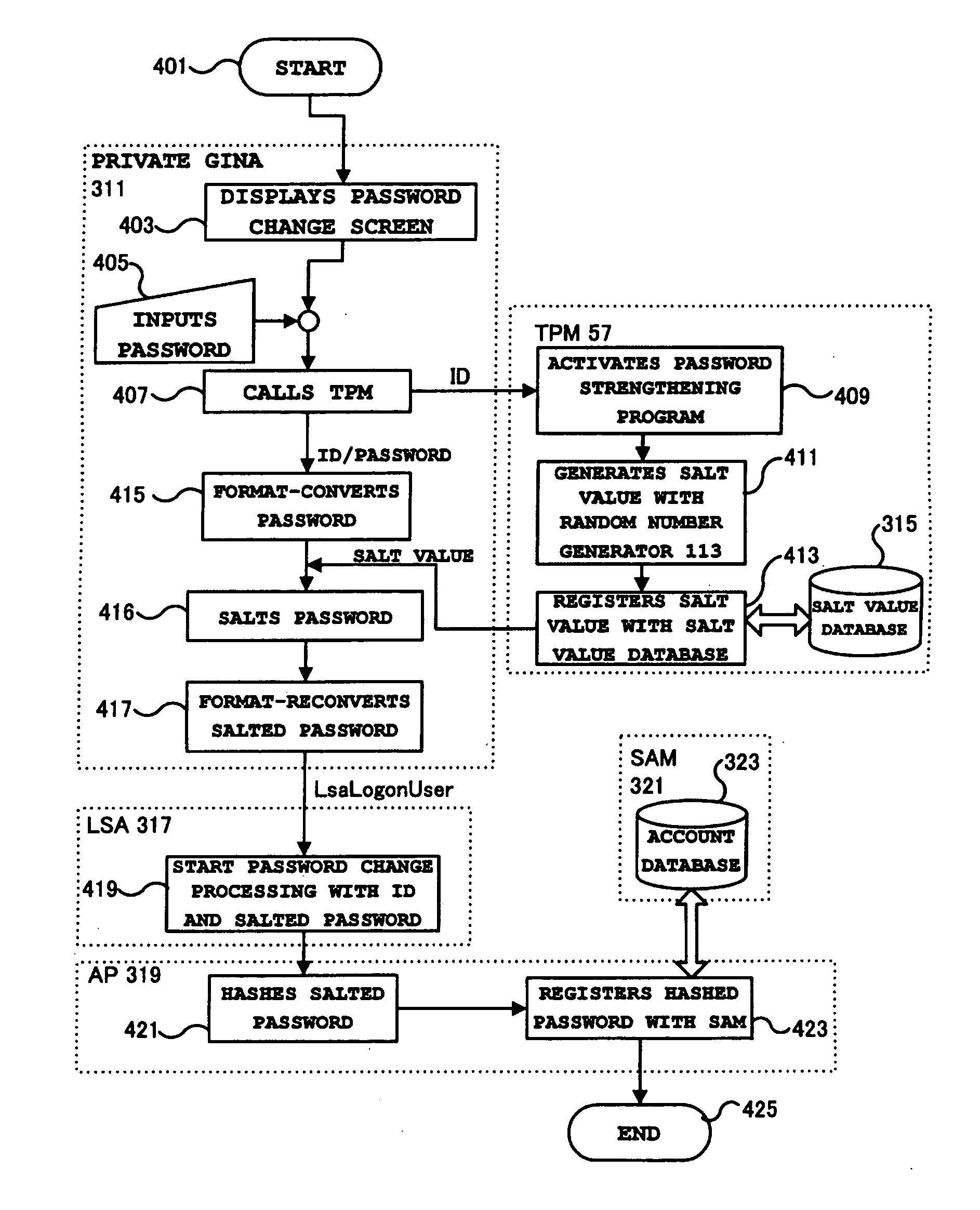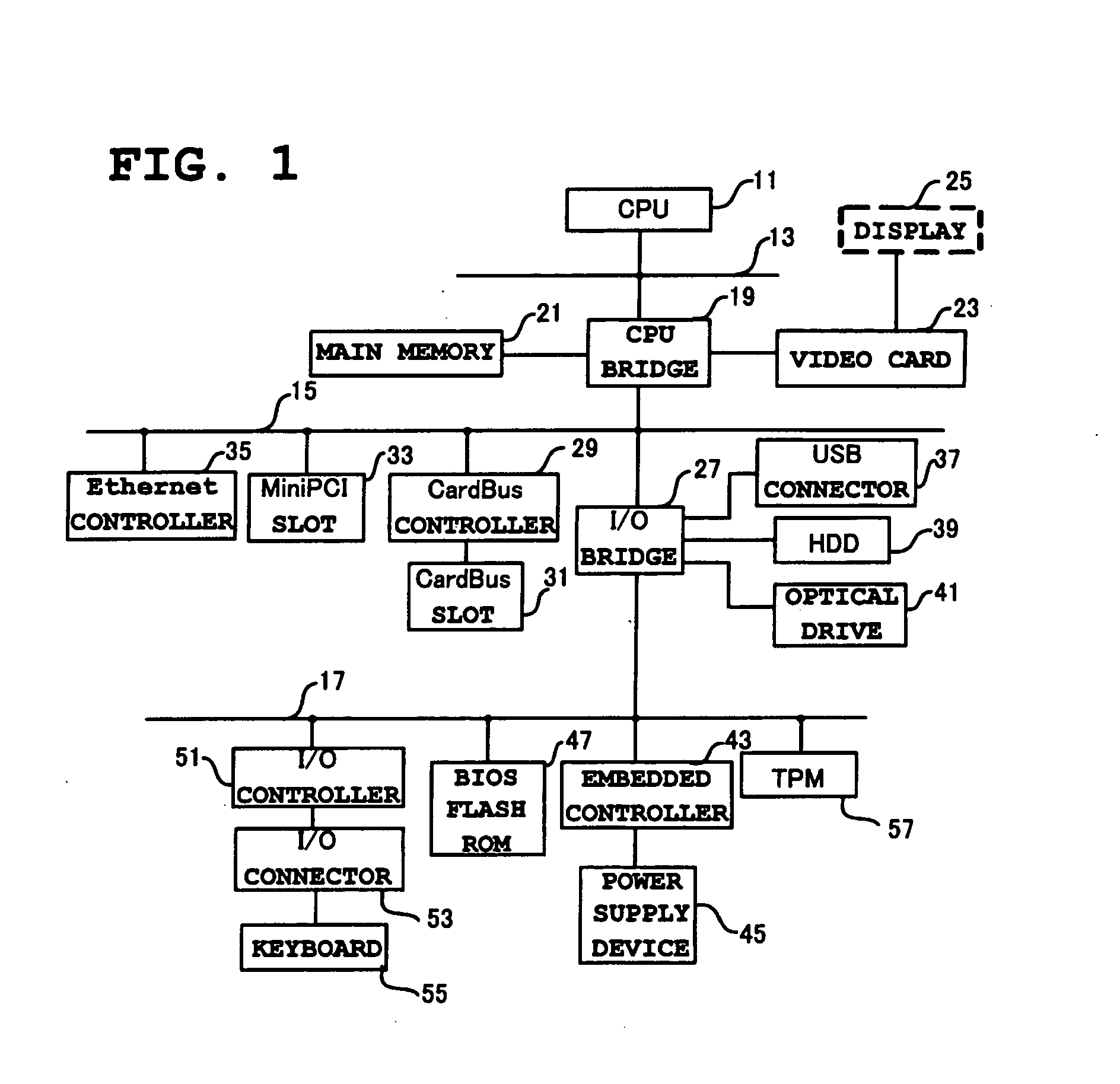Authentication password storage method and generation method, user authentication method, and computer
a password storage and authentication password technology, applied in the field of authentication password storage method and generation method, user authentication method, computer, can solve the problems of difficult for a man to remember the password as described above, the method is not often used for an actual product, and the password is difficult to remember. to achieve the effect of protecting from an attack on an authentication password
- Summary
- Abstract
- Description
- Claims
- Application Information
AI Technical Summary
Benefits of technology
Problems solved by technology
Method used
Image
Examples
first embodiment
[0040]FIG. 1 is a schematic block diagram showing the system configuration of a PC 10 according to the present invention. Inside the case of the PC 10, various devices shown in FIG. 1 are mounted. A CPU 11 is a processing unit responsible for key functions of the PC 10 and executes the OS, the BIOS, device drivers, application programs and the like. This embodiment is presently applied to any of Windows® NT, 2000 and XP and is not applied to 98 and those before 98. The CPU 11 according to this embodiment can be caused to operate in an SMM (System Management Mode), which is an operation mode for system management, by an SMI (System Management Interrupt) input pin (SMI#) being asserted. In the SMM, an SMI handler, which is an interrupt control handler existing in a CPU manufactured by Intel Corporation, is executed in a specially allocated memory space. The SMM is a privileged execution mode mainly used for suspend, resume, power management, security-related operations and the like.
[0...
second embodiment
[0063]FIG. 10 shows the internal configuration of a BIOS flash ROM 47, the NVRAM 49 and a main memory 21 in the present invention. The BIOS flash ROM 47 shown in FIG. 10(A) is a non-volatile memory in which the stored content can be electrically rewritten. In the BIOS flash ROM 47, there are stored a system BIOS (SSO Shell BIOS) 601, which is a basic program used for activation and management of the system, various utilities 603, which are software for managing operation environment such as a power source and temperature, a POST (Power-On Self Test) 605, which is software for performing a hardware test when the PC 10′ is activated, a password strengthening system 607 according to the present invention, a random number generator 609 for generating a random number, an SMI handler 611 for causing a CPU 11 to operate in the SMM, an INT13H handler 613 for accessing an HDD 39, and the like. The random number generator 609 may be implemented as software or as hardware.
[0064]The NVRAM 49 sh...
PUM
 Login to View More
Login to View More Abstract
Description
Claims
Application Information
 Login to View More
Login to View More - R&D
- Intellectual Property
- Life Sciences
- Materials
- Tech Scout
- Unparalleled Data Quality
- Higher Quality Content
- 60% Fewer Hallucinations
Browse by: Latest US Patents, China's latest patents, Technical Efficacy Thesaurus, Application Domain, Technology Topic, Popular Technical Reports.
© 2025 PatSnap. All rights reserved.Legal|Privacy policy|Modern Slavery Act Transparency Statement|Sitemap|About US| Contact US: help@patsnap.com



